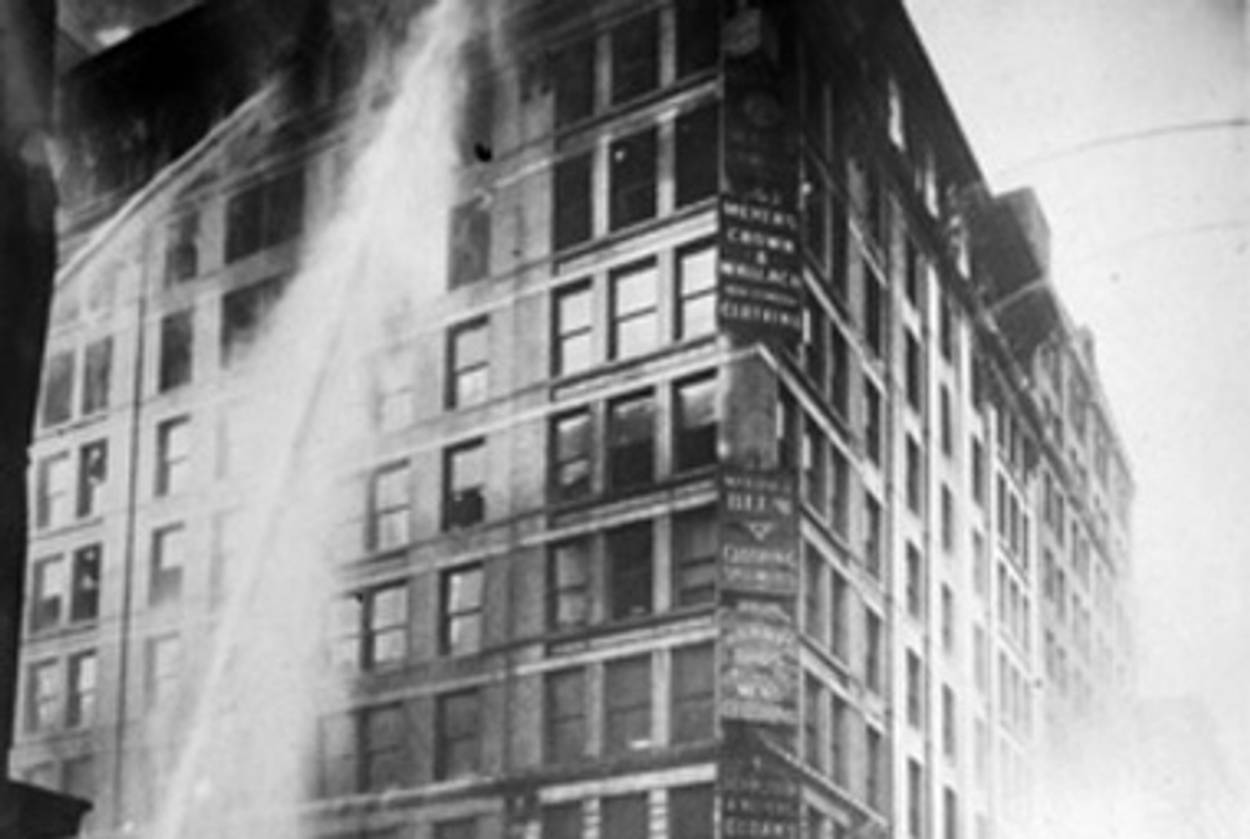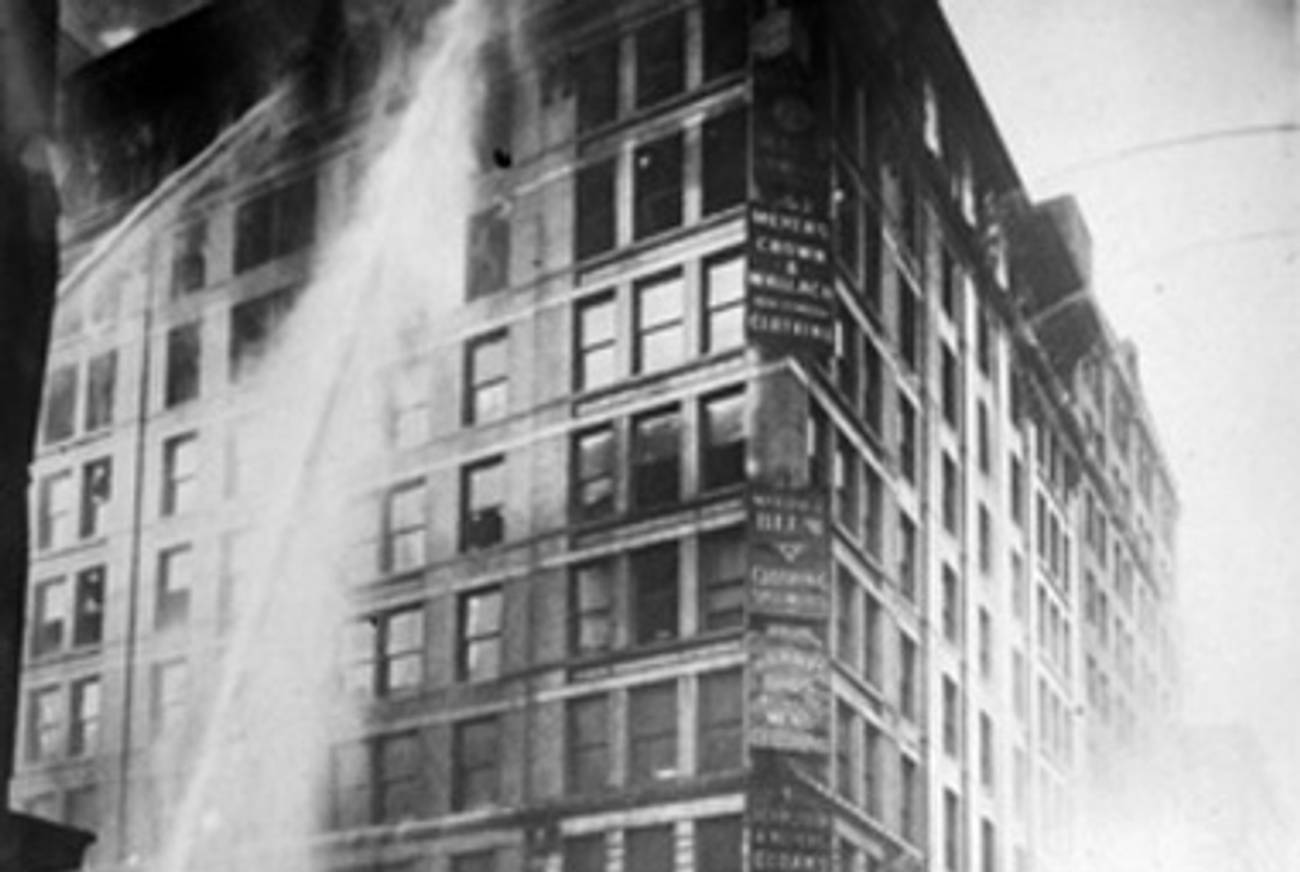Today Is the Triangle Fire’s 100th Anniversary
Some readings on its legacy




Take a moment today and remember the Triangle Shirtwaist Fire, the massive Greenwich Village tragedy that, 100 years ago today, killed 146 workers—mostly young women, many of them Jews—and helped spur the United States’s nascent labor movement. Parenting columnist Marjorie Ingall looked at the oft-overlooked complexities of the fire’s legacy, and I reviewed HBO’s documentary about the fire (which is worth your time if you can catch it on re-airing or on-demand).
Also, here is a cool thing: The good folks at Metropolitan Klezmer have recorded a long-lost piece of Yiddish sheet music composed in the fire’s immediate aftermath. And you can listen to it right now!
[audio:https://www.tabletmag.com/wp-content/uploads/audio/mp3/Triangle.mp3]
Elsewhere, the Times’s City Room’s coverage has been gangbusters: Of particular note are the basic summary of what, exactly, went down; a report on the chalky memorial performed each year (including, of course, today); and an incredibly neat look at what was then called the Asch Building, at the corner of Washington Place and Greene Street (less than five minutes’ walk from Tablet Magazine’s offices), compared to what it looks like today.
The Forward also has great coverage, and while some of it mirrors the Times’s, the paper also dug into its archives, translated the Yiddish, and reprinted what the Farverts published 100 years ago: For example, “Triangle Bosses Arrested on Murder Charge” (“The Bolted Lock Is a Mute Witness”).
Of course, no look at how much has changed would be complete without a look at how much has stayed the same. Dissent’s Greg Smithsimon and Forward’s Gal Beckerman both point to the eerie resonances between the Triangle fire and a fatal conflagration that occurred at a garment factory in Bangladesh—last year.
And guess where there remains a thriving garment industry dependent on cheap, immigrant, mostly female labor? That’s right: New York City.
Lost in the Fire [Tablet Magazine]
Triangle Fire: A Half-Hour of Horror [City Room]
In a Tragedy, a Mission to Remember [City Room]
Triangle Bosses Arrested on Murder Charge [Forward]
Mourn and Organize: The Triangle Fire at 100 [Dissent]
For Bangladeshi Garment Workers, It Is Still 1911 [Forward]
Earlier: Documentary Honors Dead with Political Touch
Marc Tracy is a staff writer at The New Republic, and was previously a staff writer at Tablet. He tweets @marcatracy.